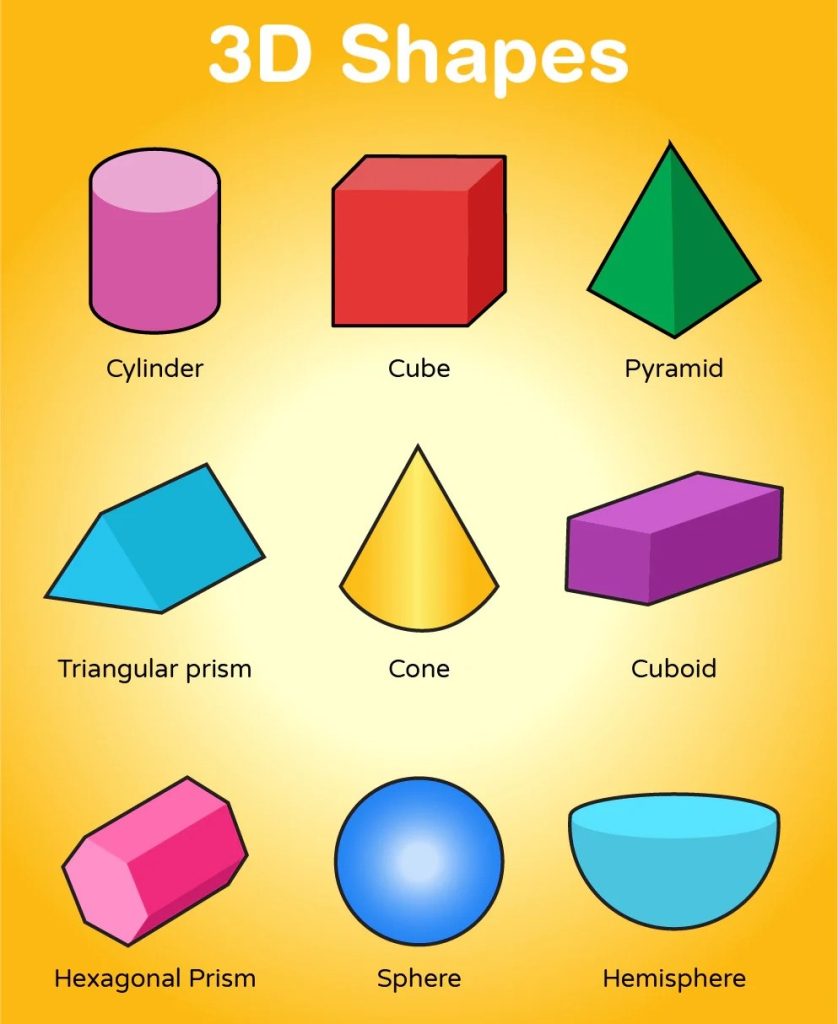
From the simplicity of a square to the complexity of a cube, shapes are the building blocks of the world around us. In the realm of geometry, we encounter two fascinating dimensions: 2D and 3D shapes. Join us on a visual exploration as we unveil the charm and characteristics of these geometric wonders.
2D Shapes: The Flatland Marvels
1. Circle:
The circle, a symbol of perfection, is a set of points equidistant from a central point. Think of it as a tire rolling smoothly in every direction.
2. Square:
With its four equal sides and right angles, the square is a symbol of stability. It’s like a window into a world where balance and symmetry reign.
3. Triangle:
Triangles come in various flavors – equilateral, isosceles, and scalene. They are the structural engineers of geometry, providing stability and strength.
4. Rectangle:
The rectangle, with its two pairs of equal sides and right angles, is the blueprint for doors, windows, and countless everyday objects.
5. Pentagon, Hexagon, Octagon, etc.:
Beyond the basics, polygons with five, six, eight, or more sides add flair and variety to the 2D landscape.
3D Shapes: The Dimensional Marvels
1. Sphere:
Imagine a ball – that’s the sphere. It’s perfectly symmetrical, and every point on its surface is equidistant from the center.
2. Cube:
The cube is a Lego block of 3D shapes. With six equal square faces, it’s a symbol of solidity and uniformity.
3. Cylinder:
Picture a soda can – that’s a cylinder. It has two circular faces and a curved surface, making it a favorite among engineers and designers.
4. Pyramid:
The pyramid, with its triangular sides converging at a point, stands tall as a symbol of strength and stability throughout history.
5. Cone:
Ice cream cones and party hats owe their shape to the cone. It has a circular base and a single curved surface rising to a point.
Learn about the area of these shapes from here
Practical Applications: Where Shapes Meet Reality
1. Architecture:
Architects use 2D and 3D shapes to design structures that are not only aesthetically pleasing but also structurally sound.
2. Engineering:
Engineers rely on the principles of geometry to design everything from machinery to bridges, ensuring strength and stability.
3. Art and Design:
Artists and designers play with shapes to create visually appealing compositions, adding depth and dimension to their work.



